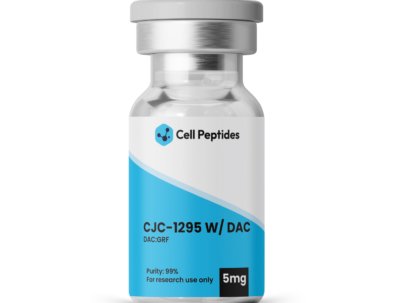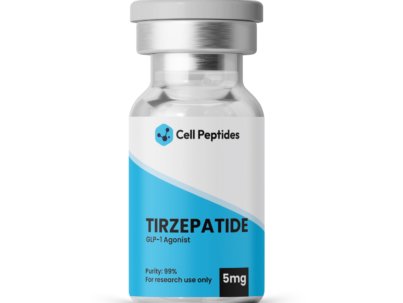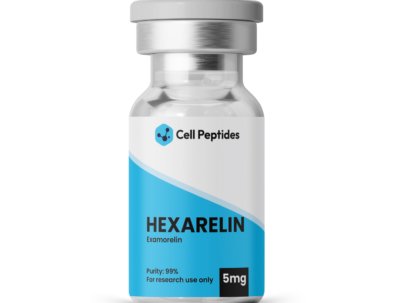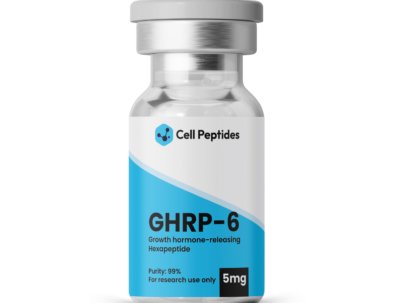- Fast shipping in USA & Europe
- Made in Switzerland
- info@cellpeptides.com
Supplement companies often claim peptides can amplify muscle gain and facilitate fat loss. However, few studies have explored the impact of peptides on bodybuilding. Some types are even restricted in professional sports. But let’s take a closer look into these specific peptides.
Peptides for bodybuilding are compounds commonly studied for their role in muscle development, fat metabolism, and post-workout recovery. In laboratory research, these peptides mimic certain hormones or signals in the body like growth hormone-releasing factors or repair-boosting molecules. The goal? To understand how they might influence muscle growth, strength, endurance, and tissue repair.
This category includes peptides that may support the body’s natural anabolic processes such as boosting growth hormone (GH), increasing IGF-1 levels, speeding up recovery, or even supporting fat burning. That’s why they’ve become a hot area of interest in sports science and biomedical research.
Researchers explore how these peptides interact with receptors, promote lean mass retention, and accelerate healing. From stimulating GH pulses to improving nitrogen retention each compound works differently but is part of the bigger puzzle: performance optimization at a molecular level.
Important Note: These peptides are intended for laboratory research use only. Effects in humans are described strictly for informational and scientific reference purposes. They are not intended for human consumption or medical use.
Peptides are short chains of amino acids. Think of them as tiny messengers that tell your body to grow, repair, or burn fat depending on the peptide’s structure and target.
When it comes to bodybuilding, most research focuses on a few specific types:
Each class works by binding to specific receptors like the GHRH receptor in the brain or IGF-1 receptor in muscle tissue. That’s how they trigger signals for growth, repair, or metabolism.
To keep it simple:
These peptides don’t build muscle on their own, but they can influence the pathways that do.
Each peptide class plays a different role, but they all tap into your body’s natural processes to promote growth, repair, or recovery.
Let’s break it down.
These peptides signal the pituitary gland to release more growth hormone (GH).
When GH increases, it stimulates the liver to produce IGF-1, a key hormone for muscle growth and fat metabolism.
This activates the GH/IGF-1 axis, which promotes protein synthesis, increases nitrogen retention, and speeds up recovery post-workout.
IGF-1 LR3 is a lab-modified version of natural IGF-1 with a longer half-life.
It directly binds to IGF-1 receptors in muscle cells, activating the PI3K/Akt/mTOR pathway, a key route for cell growth and protein synthesis.
This means more lean muscle, better strength gains, and faster tissue regeneration.
These peptides don’t directly build muscle, but by improving recovery and reducing inflammation, they help you train harder and bounce back faster.
Most studies on bodybuilding peptides are early-stage. That means lab tests, animal models, and limited human data. Still, the findings are interesting, especially when it comes to muscle growth, hormone levels, and recovery.
Studies show that GHRPs like Ipamorelin and MK-677 (Ibutamoren) can increase growth hormone and IGF-1 levels significantly. In animal and human studies, MK-677 boosted GH and IGF-1 secretion over 12+ months, leading to fat loss and muscle retention.
Similarly, CJC-1295, a GHRH analog, helped increase GH release in pulses, closely mimicking natural GH rhythms without overstimulation.
IGF-1 LR3 has been shown in preclinical studies to enhance protein synthesis and promote muscle hypertrophy. It activates the mTOR pathway, crucial for lean mass development.
Tesamorelin, FDA-approved for HIV-related lipodystrophy, also increases IGF-1 levels and supports lean tissue growth. Though not studied specifically for bodybuilding, its anabolic effects are clear in medical use.
Animal studies on BPC-157 show it accelerates healing in muscles, tendons, ligaments, and even nerves. It boosts angiogenesis (new blood vessel growth), reduces inflammation, and speeds up recovery from injuries.
TB-500 (a synthetic version of Thymosin Beta-4) is shown to help with muscle regeneration and cell migration, key factors in post-training recovery.
Note: Human research is limited. Most of these findings come from animal models or isolated tissue studies. While early data looks promising, more clinical trials are needed to confirm long-term safety and effectiveness in humans.
Peptides used in bodybuilding research are powerful, but they’re not risk-free. Since many of these compounds act on hormone pathways, there’s potential for side effects, especially with long-term or unsupervised use.
Risks include:
Regulatory status:
Currently, no peptide is FDA-approved for muscle building or athletic enhancement. Many are in experimental stages or approved for very specific medical conditions, not for performance enhancement.
All peptides mentioned here are intended for laboratory research use only.
Researchers must follow best practices:
Important: These compounds are not for human consumption. The information shared is for educational and scientific purposes only.
Looking to build lean muscle, recover faster, and improve training outcomes in research settings? These peptides stand out for their roles in GH stimulation, recovery, and anabolic signaling.
This powerful combo is popular in bodybuilding research for its dual-action GH stimulation. CJC offers sustained pulses, while Ipamorelin promotes quick GH release with minimal side effects.
Known as a healing peptide, BPC-157 supports recovery of muscle, tendon, and ligament injuries, especially useful in post-training recovery studies.
A long-acting IGF-1 analogue that directly activates the mTOR pathway. It’s researched for increasing muscle size and strength.
This oral GH secretagogue has been shown to raise GH and IGF-1 levels consistently in long-term studies. Easy to dose in lab settings.
TB-500 (Thymosin Beta-4) supports tissue regeneration and muscle recovery. Often studied alongside BPC-157 for synergistic repair effects.
Useful in research focused on increasing appetite and growth hormone levels. GHRP-6 is also studied for its anabolic and GH-promoting properties.
When working with peptides for bodybuilding research, quality matters. Always select peptides that meet high standards for purity (≥98%) and come with a Certificate of Analysis (CoA) — all of this can be found at our store — CellPeptides. This confirms identity, assay results, and sterility, so you know exactly what you’re working with.
Before beginning your experiment, follow these practical tips:
Reconstitution – Use sterile bacteriostatic water or appropriate solvent. Avoid shaking; gently swirl instead.
Dosing – Start with a defined research dose range based on existing literature. Always record your calculations.
Storage – Store lyophilized peptides at –20 °C or –80 °C. Once reconstituted, refrigerate and use within 7–14 days.
Avoid freeze-thaw cycles – Aliquot into smaller vials to maintain stability.
For lab safety:
Always follow institutional safety protocols and dispose of unused material responsibly. These are active compounds, so handle with care.
No. Shaking can damage the peptide’s structure. Gently swirl or tilt the vial until fully dissolved.
Try using a small amount of acetic acid (0.6%) or increasing the solvent volume slightly. Check the product’s reconstitution guide or contact the supplier for optimal pH.
No. Only use sterile, research-grade solutions like bacteriostatic water or sterile water for injection (SWFI) to prevent contamination.
Freezing a liquid peptide can cause degradation. Only freeze the dry, lyophilized powder. Once mixed, keep it refrigerated and use within a few days. Always follow lab protocols for safe handling and storage.
Summing up, peptides for bodybuilding offer exciting potential in muscle growth, recovery, and fat metabolism but only within controlled laboratory research settings. These compounds are not for human use or supplementation.
If you’re conducting research, build your study on peer-reviewed evidence, use proper lab techniques, and always document your methods.
Want to explore high-purity peptides for your experiment?
Browse our full Bodybuilding Peptides Collection here.
For deeper insights, refer to published scientific literature and trusted biomedical databases before designing your next study.
Stay curious. Stay scientific.
Peptides for Bodybuilding
Supplement companies often claim peptides can amplify muscle gain and facilitate fat loss. However, few studies have explored the impact of peptides on bodybuilding. Some types are even restricted in professional sports. But let’s take a closer look into these specific peptides.
Peptides for bodybuilding are compounds commonly studied for their role in muscle development, fat metabolism, and post-workout recovery. In laboratory research, these peptides mimic certain hormones or signals in the body like growth hormone-releasing factors or repair-boosting molecules. The goal? To understand how they might influence muscle growth, strength, endurance, and tissue repair.
This category includes peptides that may support the body’s natural anabolic processes such as boosting growth hormone (GH), increasing IGF-1 levels, speeding up recovery, or even supporting fat burning. That’s why they’ve become a hot area of interest in sports science and biomedical research.
Researchers explore how these peptides interact with receptors, promote lean mass retention, and accelerate healing. From stimulating GH pulses to improving nitrogen retention each compound works differently but is part of the bigger puzzle: performance optimization at a molecular level.
Important Note: These peptides are intended for laboratory research use only. Effects in humans are described strictly for informational and scientific reference purposes. They are not intended for human consumption or medical use.
Peptides are short chains of amino acids. Think of them as tiny messengers that tell your body to grow, repair, or burn fat depending on the peptide’s structure and target.
When it comes to bodybuilding, most research focuses on a few specific types:
Each class works by binding to specific receptors like the GHRH receptor in the brain or IGF-1 receptor in muscle tissue. That’s how they trigger signals for growth, repair, or metabolism.
To keep it simple:
These peptides don’t build muscle on their own, but they can influence the pathways that do.
Each peptide class plays a different role, but they all tap into your body’s natural processes to promote growth, repair, or recovery.
Let’s break it down.
These peptides signal the pituitary gland to release more growth hormone (GH).
When GH increases, it stimulates the liver to produce IGF-1, a key hormone for muscle growth and fat metabolism.
This activates the GH/IGF-1 axis, which promotes protein synthesis, increases nitrogen retention, and speeds up recovery post-workout.
IGF-1 LR3 is a lab-modified version of natural IGF-1 with a longer half-life.
It directly binds to IGF-1 receptors in muscle cells, activating the PI3K/Akt/mTOR pathway, a key route for cell growth and protein synthesis.
This means more lean muscle, better strength gains, and faster tissue regeneration.
These peptides don’t directly build muscle, but by improving recovery and reducing inflammation, they help you train harder and bounce back faster.
Most studies on bodybuilding peptides are early-stage. That means lab tests, animal models, and limited human data. Still, the findings are interesting, especially when it comes to muscle growth, hormone levels, and recovery.
Studies show that GHRPs like Ipamorelin and MK-677 (Ibutamoren) can increase growth hormone and IGF-1 levels significantly. In animal and human studies, MK-677 boosted GH and IGF-1 secretion over 12+ months, leading to fat loss and muscle retention.
Similarly, CJC-1295, a GHRH analog, helped increase GH release in pulses, closely mimicking natural GH rhythms without overstimulation.
IGF-1 LR3 has been shown in preclinical studies to enhance protein synthesis and promote muscle hypertrophy. It activates the mTOR pathway, crucial for lean mass development.
Tesamorelin, FDA-approved for HIV-related lipodystrophy, also increases IGF-1 levels and supports lean tissue growth. Though not studied specifically for bodybuilding, its anabolic effects are clear in medical use.
Animal studies on BPC-157 show it accelerates healing in muscles, tendons, ligaments, and even nerves. It boosts angiogenesis (new blood vessel growth), reduces inflammation, and speeds up recovery from injuries.
TB-500 (a synthetic version of Thymosin Beta-4) is shown to help with muscle regeneration and cell migration, key factors in post-training recovery.
Note: Human research is limited. Most of these findings come from animal models or isolated tissue studies. While early data looks promising, more clinical trials are needed to confirm long-term safety and effectiveness in humans.
Peptides used in bodybuilding research are powerful, but they’re not risk-free. Since many of these compounds act on hormone pathways, there’s potential for side effects, especially with long-term or unsupervised use.
Risks include:
Regulatory status:
Currently, no peptide is FDA-approved for muscle building or athletic enhancement. Many are in experimental stages or approved for very specific medical conditions, not for performance enhancement.
All peptides mentioned here are intended for laboratory research use only.
Researchers must follow best practices:
Important: These compounds are not for human consumption. The information shared is for educational and scientific purposes only.
Looking to build lean muscle, recover faster, and improve training outcomes in research settings? These peptides stand out for their roles in GH stimulation, recovery, and anabolic signaling.
This powerful combo is popular in bodybuilding research for its dual-action GH stimulation. CJC offers sustained pulses, while Ipamorelin promotes quick GH release with minimal side effects.
Known as a healing peptide, BPC-157 supports recovery of muscle, tendon, and ligament injuries, especially useful in post-training recovery studies.
A long-acting IGF-1 analogue that directly activates the mTOR pathway. It’s researched for increasing muscle size and strength.
This oral GH secretagogue has been shown to raise GH and IGF-1 levels consistently in long-term studies. Easy to dose in lab settings.
TB-500 (Thymosin Beta-4) supports tissue regeneration and muscle recovery. Often studied alongside BPC-157 for synergistic repair effects.
Useful in research focused on increasing appetite and growth hormone levels. GHRP-6 is also studied for its anabolic and GH-promoting properties.
When working with peptides for bodybuilding research, quality matters. Always select peptides that meet high standards for purity (≥98%) and come with a Certificate of Analysis (CoA) — all of this can be found at our store — CellPeptides. This confirms identity, assay results, and sterility, so you know exactly what you’re working with.
Before beginning your experiment, follow these practical tips:
Reconstitution – Use sterile bacteriostatic water or appropriate solvent. Avoid shaking; gently swirl instead.
Dosing – Start with a defined research dose range based on existing literature. Always record your calculations.
Storage – Store lyophilized peptides at –20 °C or –80 °C. Once reconstituted, refrigerate and use within 7–14 days.
Avoid freeze-thaw cycles – Aliquot into smaller vials to maintain stability.
For lab safety:
Always follow institutional safety protocols and dispose of unused material responsibly. These are active compounds, so handle with care.
No. Shaking can damage the peptide’s structure. Gently swirl or tilt the vial until fully dissolved.
Try using a small amount of acetic acid (0.6%) or increasing the solvent volume slightly. Check the product’s reconstitution guide or contact the supplier for optimal pH.
No. Only use sterile, research-grade solutions like bacteriostatic water or sterile water for injection (SWFI) to prevent contamination.
Freezing a liquid peptide can cause degradation. Only freeze the dry, lyophilized powder. Once mixed, keep it refrigerated and use within a few days. Always follow lab protocols for safe handling and storage.
Summing up, peptides for bodybuilding offer exciting potential in muscle growth, recovery, and fat metabolism but only within controlled laboratory research settings. These compounds are not for human use or supplementation.
If you’re conducting research, build your study on peer-reviewed evidence, use proper lab techniques, and always document your methods.
Want to explore high-purity peptides for your experiment?
Browse our full Bodybuilding Peptides Collection here.
For deeper insights, refer to published scientific literature and trusted biomedical databases before designing your next study.
Stay curious. Stay scientific.








